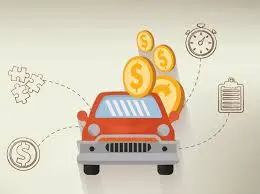What is Auto Financing?
Auto financing is essentially a loan taken to purchase a vehicle, either from a dealership, bank, or online lender. It allows you to spread the cost of the car over a specified period, known as the loan term, by making regular payments. Instead of paying the entire amount in one go, you pay the lender monthly with added interest. Once the loan is fully repaid, the vehicle becomes your property.
There are generally two parties involved in an auto loan: the lender, who provides the loan, and the borrower, who repays the loan. The lender charges interest on the loan, which is how they make money from the transaction.
Types of Auto Financing
- Direct Lending: In direct lending, the borrower secures financing directly from a bank, credit union, or online lender before visiting a dealership. This method allows the buyer to approach the car-buying process with pre-approval, which can sometimes provide a stronger negotiating position.
- Dealer Financing: With dealer financing, the buyer applies for financing through the car dealership. The dealer acts as an intermediary between the buyer and the financial institution. While convenient, dealer financing may sometimes come with higher interest rates or additional fees compared to direct lending, as the dealership might mark up the interest rate for profit.
- Lease Financing: In a car lease, you essentially rent the vehicle for a specific period, usually two to four years. You make monthly payments, but instead of owning the car at the end of the lease term, you return it to the dealership. Leasing is an option for those who want to drive a new car every few years but may come with mileage restrictions and wear-and-tear limits.
Key Factors in Auto Financing
When financing a vehicle, there are several factors to consider:
- Interest Rate: The interest rate, often expressed as the annual percentage rate (APR), determines how much extra you will pay on top of the vehicle's price. Interest rates can vary widely based on the lender, loan term, and your credit score.
- Loan Term: Loan terms typically range from 36 to 72 months, with longer terms resulting in smaller monthly payments but higher overall interest costs. Shorter loan terms have higher monthly payments but save you money on interest in the long run.
- Down Payment: A larger down payment reduces the total loan amount, lowering your monthly payments and potentially securing you a lower interest rate. Some lenders require a down payment, while others may offer no-money-down options for qualified buyers.
- Credit Score: Your credit score plays a significant role in determining the interest rate and loan terms you qualify for. A higher credit score generally means lower interest rates and more favorable loan terms. Lenders view borrowers with excellent credit as lower risk, while those with poor credit may face higher rates or struggle to secure a loan altogether.
How Auto Financing Works
The process of financing a car begins with the loan application. Whether you apply through a bank, credit union, or dealership, you’ll need to provide proof of income, employment history, and other personal details. The lender will run a credit check to assess your creditworthiness.
Once approved, you’ll agree on the loan amount, interest rate, and repayment terms. The lender pays the dealership the full price of the vehicle, and you make monthly payments to the lender until the loan is paid off. These payments include both the principal amount (the cost of the car) and interest.
Tips for Getting the Best Auto Financing Deal
- Know Your Credit Score: Before shopping for a loan, check your credit score and take steps to improve it if necessary. A higher score can save you thousands of dollars in interest over the life of the loan.
- Shop Around: Don’t settle for the first financing offer you receive. Compare rates from banks, credit unions, online lenders, and dealerships to find the best deal.
- Negotiate: Remember that the interest rate isn’t the only factor you can negotiate. You can also negotiate the price of the car, the loan term, and any additional fees.
- Consider a Larger Down Payment: The more you can put down upfront, the less you’ll need to finance, which means lower monthly payments and less interest paid over time.
- Read the Fine Print: Always read the loan agreement carefully. Make sure you understand the interest rate, monthly payment, loan term, and any additional fees.
Conclusion
Auto financing offers a way to purchase a vehicle without depleting your savings. By understanding how the process works and considering the factors that affect loan terms, you can secure a financing deal that fits your budget. Remember to shop around, negotiate where possible, and carefully review the terms to make sure you're getting the best possible deal on your vehicle.

